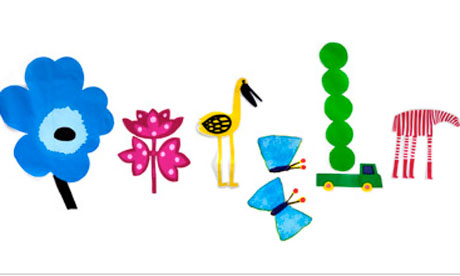
The Guardian (UK): Spring equinox Google doodle heralds change of season
Google marked the vernal equinox, or the first day of Spring, using a doodle based on a design by Marimekko, the the Finnish textile company famous for its bright, bold prints.If there's an event worth celebrating, it will have a Google doodle--eventually. At least the Vernal Equinox has one now.
As for what's being celebrated, I'll let Joe Rao of Space.com explain in the following article in Huffington Post.
Spring Equinox, Vernal Equinox: Whatever It's Called, New Season's Arrival in 2012 Is Unusually Early
Across much of the United States, this has been an unusually mild winter, especially for those living east of the Mississippi. Not a few people have noted that spring seems to have come early this year. Of course, in a meteorological sense that could be true, but in 2012 it will also be true in an astronomical sense as well, because this year spring will make its earliest arrival since the late 19th century: 1896, to be exact.The Vernal Equinox arrrived at 1:14 A.M. E.D.T. today, which meant that it arrived during the night of March 19th from Mountain Time Zone west to the International Date Line. That is incredibly early. So, any of the groundhogs that predicted an early spring in the eastern U.S. would have had the odds on their side.
As for why the Vernal Equinox arrived so soon this year, the HuffPo article lists several reasons.
Read the rest of the article on HuffPo (or Space.com if you can find it; I couldn't). Between it and The Science of Today's Spring Equinox, which was originally from LiveScience but is also on Space.com (are the articles playing musical chairs today?), one can get a good understanding of the history and significance of today.
- A year is not an even number of days, and neither are the seasons. To try to achieve a value as close as possible to the exact length of the year, our Gregorian Calendar was constructed to give a close approximation to the tropical year, which is the actual length of time it takes for Earth to complete one orbit around the sun. It eliminates leap days in century years not evenly divisible by 400, such 1700, 1800 and 2100, and millennium years that are divisible by 4000, such as 8000 and 12000.
- Another reason is that Earth's elliptical orbit is changing its orientation relative to the sun (it skews), which causes Earth's axis to constantly point in a different direction, called precession. Since the seasons are defined as beginning at strict 90-degree intervals, these positional changes affect the time Earth reaches each 90-degree location in its orbit around the sun.
- The pull of gravity from the other planets also affects the location of Earth in its orbit.
No comments:
Post a Comment